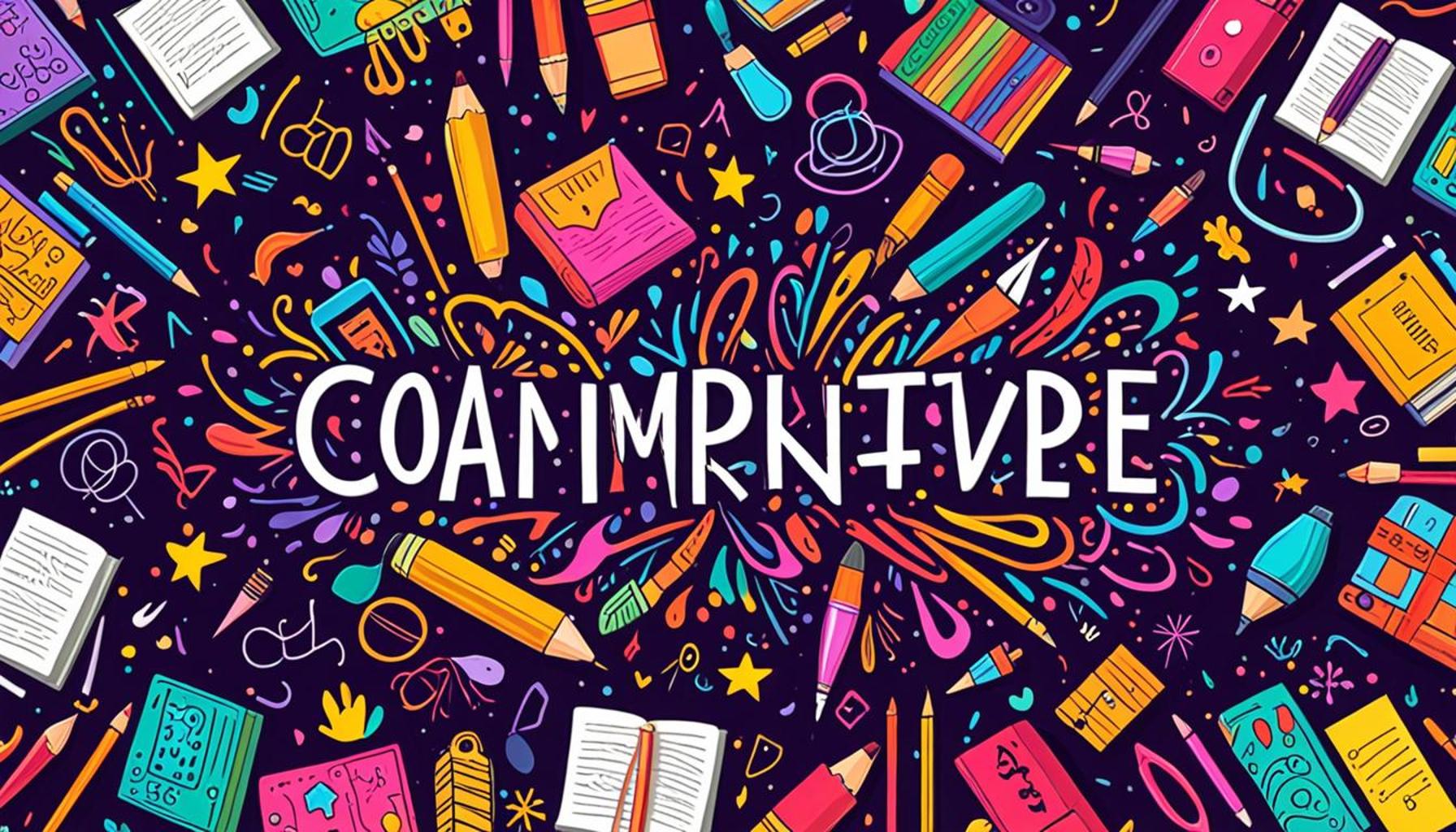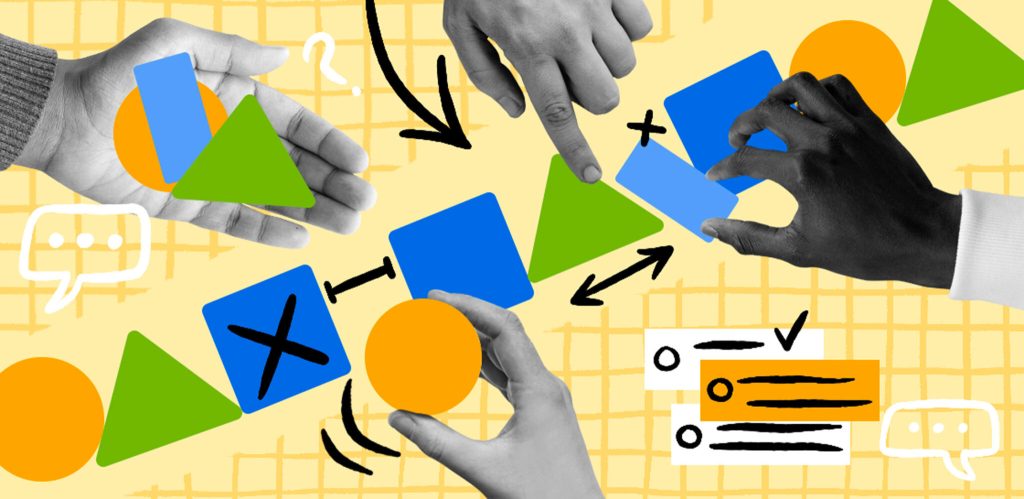Genres of Collaborative Writing: Creating Stories Together with Creative Communities

The Evolution of Storytelling Through Collaboration
In an era where technology shapes the way we create and consume content, the art of storytelling has undergone a remarkable transformation. Today, collaborative writing serves as a dynamic platform for writers, artists, and readers to come together, sharing their narratives and insights. This method not only amplifies creativity but also allows different perspectives to merge, resulting in authentic and multifaceted stories that resonate across various cultures.
Shared Narratives are at the heart of collaborative writing. Authors blend their unique styles, creating elaborate worlds filled with richly developed characters. For instance, a group of writers might come together to craft a novel that intertwines the myths of various Nigerian tribes, showcasing the depth of characters influenced by folklore and modern experiences. By combining their voices, they can present a story that reflects a broader cultural spectrum, inviting readers to explore different facets of identity.
Interactive Storytelling takes this a step further, allowing readers to engage directly with the narrative. Platforms like Wattpad enable users to vote on plot decisions, turning passive readers into active participants. Imagine a young Nigerian writer penning a contemporary love story set against the backdrop of bustling Lagos. As chapters roll out, readers could suggest how the protagonist navigates the complexities of a long-distance relationship, actively shaping the outcome. This interaction not only enhances engagement but also instills a sense of community among contributors.
Genre-blending has also become a hallmark of collaborative writing. Writers are now free to experiment, mixing elements of fantasy, horror, and romance to create hybrid genres that captivate diverse audiences. For example, a collective effort could yield a story about a mystical village in Nigeria that harnesses technology to battle supernatural forces, seamlessly merging tradition and innovation.
The rise of collaborative platforms has dismantled geographical barriers, allowing writers from different continents, cultures, and backgrounds to connect. Google Docs and similar tools empower individuals to brainstorm and refine ideas in real-time, fostering collaboration regardless of location. This newfound accessibility facilitates a sense of belonging in vibrant creative communities, cherishing contributions from all voices.

As we explore various genres of collaborative writing, we will spotlight impactful works and their contributions to storytelling. By understanding how these genres foster connections, aspiring writers can be encouraged to engage in collaborative ventures, opening themselves up to unexpected outcomes and new horizons in their writing journeys. The ability to create compelling stories together is not just an art; it is a powerful means of cultural expression and unity.
ADDITIONAL INSIGHTS: Expand your understanding here
Exploring the Spectrum of Collaborative Writing Genres
As we delve into the world of collaborative writing, it is essential to understand the diverse genres that emerge from this collective creative process. Each genre not only showcases unique storytelling techniques but also highlights the ways in which communities converge to share their narratives. From fiction to poetry, collaborative writing encompasses a wide range of forms that invite participation and creativity.
Fiction in Collaboration
One of the most vibrant genres in collaborative writing is fiction. Collaborative fiction projects often bring together writers to create intricate plots and multidimensional characters. A notable example is seen in the collaborative novels that arise from online communities where writers contribute chapters, each adding a distinct flavor that reflects their individual writing styles. This genre thrives on the interplay of ideas, enabling storytellers to conjure imaginative worlds that resonate universally.
The Beauty of Poetry Collaboration
Poetry collaboration is another compelling genre, where writers come together to experiment with different poetic forms and themes. This genre can manifest as a series of interconnected poems that explore a shared theme, such as the vibrant culture of Nigeria—its rich traditions, evolving landscapes, and dynamic urban life. Writers might collectively compose an anthology titled “Voices of Nigeria,” showcasing diverse poetic expressions that capture the essence of the nation.
Inventive Non-Fiction Narratives
Collaborative writing is not limited to fiction and poetry; it also extends to non-fiction genres. Groups can collaboratively produce essays, articles, and documentaries that draw upon collective experiences and knowledge. Consider a team of activists working on a project to highlight environmental challenges in Nigeria. Their joint efforts result in an impactful narrative that educates readers about ecological issues, inspiring action and awareness through shared insights.
Popular Genres in Collaborative Writing
The genres of collaborative writing often overlap, allowing for rich intersections that make each project unique. Here are some popular genres that thrive in collaborative settings:
- Fan Fiction: Reimagining existing worlds and characters created by others.
- Serialized Stories: Ongoing narratives where writers take turns maintaining the story arc.
- Role-playing Games (RPGs): Interactive storytelling where participants define characters and plot outcomes.
- Anthology Projects: Collections of stories or poems from multiple authors unified by a central theme.
As these genres evolve, they force writers to adapt and experiment, further enriching the collaborative writing landscape. Understanding the intricate dynamics between genres in collaborative writing will empower aspiring authors to engage with different forms and, ultimately, create engaging narratives that reflect the rich tapestry of voices within a community. Embracing collaboration can unravel new horizons, revealing the power of storytelling as a tool for unity and shared understanding.
| Advantage | Detailed Explanation |
|---|---|
| Diverse Perspectives | Collaborative writing promotes the inclusion of various viewpoints, enriching the narrative textures of stories. |
| Enhanced Creativity | Working with creative communities unleashes new ideas, breaking the confines of solitary writing. |
| Skill Development | Writers hone their craft by exchanging techniques and feedback within their community. |
| Increased Motivation | Collaborative settings foster accountability and enthusiasm for completing projects. |
The “Genres of Collaborative Writing” exhibit an exciting blend of creativity and community spirit. By leveraging the strengths of multiple authors, these genres encourage authors to share ideas, collaborate on plot twists, and dive into character development in ways that solo projects cannot replicate. The ability to meld various voices results in a rich tapestry of narratives that reflect the community’s diversity, painting a broader picture of shared human experience. Moreover, technology has significantly driven this genre forward. Online platforms have made it easier than ever for writers from around the globe to connect, share their work, and provide immediate feedback, thus enhancing their craft. Many communities also offer workshops and resources, making it easier for writers to develop their skills and collaborate effectively. As both new and seasoned authors engage in collaborative storytelling, they not only craft compelling tales but also build lasting relationships that can lead to further creative endeavors.
YOU MAY ALSO LIKE: Read read another article
The Role of Digital Platforms in Collaborative Writing
In recent years, the advent of digital platforms has transformed the landscape of collaborative writing, notably expanding its reach and accessibility. Online tools and communities facilitate connections among writers from varied backgrounds, allowing them to share their stories and amplify their voices. This democratization of storytelling not only enriches the collaborative writing experience but also fosters inclusivity within creative communities.
Web-based Writing Communities
Web-based platforms such as Wattpad, Archive of Our Own, and Medium have emerged as popular hubs for collaborative writing. On these platforms, users can engage in exercises such as co-authoring stories, sharing drafts, and providing feedback on each other’s work. For Nigerian writers, these platforms present an opportunity to connect with others while exploring themes that reflect their cultural narratives. The utilization of digital spaces encourages cross-cultural collaborations, resulting in rich stories that embody collective experiences.
Social Media as a Collaborative Tool
Social media has also become an integral part of collaborative writing, allowing for instant interaction and collaboration across various platforms. Hashtags, Twitter threads, and Facebook groups serve as catalysts for creative partnerships. For instance, a hashtag challenge that encourages participants to develop short stories based on prompts can lead to innovative narratives that capture the essence of the Nigerian experience. This blend of immediacy and creativity enables writers to curate an audience while involved in collaborative endeavors.
Interactive Storytelling and Live Writing Sessions
Another exciting aspect of collaborative writing is interactive storytelling, where authors and readers engage in real-time to shape narratives. Platforms like Discord and Twitch allow community members to participate in live writing sessions, creating a dynamic and inclusive atmosphere. Such sessions can evolve into community-driven storytelling events that emphasize the unique cultural identities found within Nigeria. Authors also glean valuable feedback from their audience during these interactions, enhancing their writing journeys.
Hybrid Formats: Merging Genres
The blend of genres fueled by collaboration is evident in the rise of hybrid formats, combining elements of fiction, non-fiction, poetry, and more. This trend invites writers to explore storytelling methods that resonate with contemporary audiences. A collaborative art project, for instance, may incorporate poetry alongside visual storytelling, resulting in a multi-dimensional exploration of cultural themes. This incorporation of various genres makes collaborative writing projects more appealing and diverse, capturing the essence of communal identity.
The Future of Collaborative Writing Genres
As the landscape of collaborative writing continues to evolve, the future promises an even broader array of genres and formats. Emerging technologies such as virtual reality and augmented reality present exciting possibilities for immersive storytelling experiences. Writers in Nigeria, especially those exploring local folklore and traditions, can leverage these technologies to create engaging narratives that transport audiences into uniquely crafted worlds. Embracing these innovations not only revitalizes storytelling but also strengthens the bond within creative communities.
Understanding the role of digital platforms and the fusion of genres serves as a gateway for writers to explore new avenues of collaboration. As communities make strides in collaborative storytelling, the richness of diverse voices within the tapestry of narratives becomes even more pronounced, pushing the boundaries of what storytelling can achieve.
YOU MAY ALSO LIKE: Read read another article
Conclusion: Embracing the Future of Collaborative Storytelling
In summary, the genres of collaborative writing are evolving into a multifaceted phenomenon that celebrates diversity, creativity, and community. The integration of digital platforms has revolutionized how writers connect, enabling them to share their narratives in ways previously unimaginable. As platforms like Wattpad and Discord continue to flourish, they not only foster collaboration across geographical boundaries but also create spaces where unique cultural expressions—especially from Nigeria—can thrive and resonate on a global stage.
The role of social media as a catalyst in this transformation cannot be overstated. It empowers writers to engage instantly with their audience, leading to a dynamic storytelling process that is both interactive and immersive. As communities leverage these tools to merge genres and experiment with innovative formats, collaborative writing is becoming a powerful vehicle for cultural exchange and communal identity.
Looking ahead, the future of collaborative writing holds exciting possibilities, with emerging technologies like virtual reality poised to redefine storytelling experiences. As creativity flows through these collaborations, the myriad voices contributing to shared narratives will continue to enrich the literary landscape. Writers are encouraged to seize these opportunities, explore new genres, and weave their stories into the wider fabric of collective creativity. Together, these efforts will not only shape individual writing journeys but also highlight the transformative power of storytelling in fostering community and connection.
Related posts:
Exploring Creative Writing: The Intersection of Literary Genres and Artistic Hobbies
Writing Microstories: The Art of Telling Stories in Few Words
Writing Chronicles: Capturing Everyday Moments with Creativity
The Power of Poetry: How Writing Poems Can Enrich Your Creative Hobbies
Fiction and Reality: Transforming Personal Experiences into Captivating Narratives
The Writing of Diaries: Transforming Thoughts into Personal and Reflective Narratives

Linda Carter is a writer and creative hobbies expert specializing in crafting, DIY projects, and artistic exploration. With extensive experience helping individuals discover their creative potential and bring their ideas to life, Linda shares her knowledge on our platform. Her goal is to empower readers with practical tips, inspiring ideas, and step-by-step strategies for success in the world of creative hobbies.